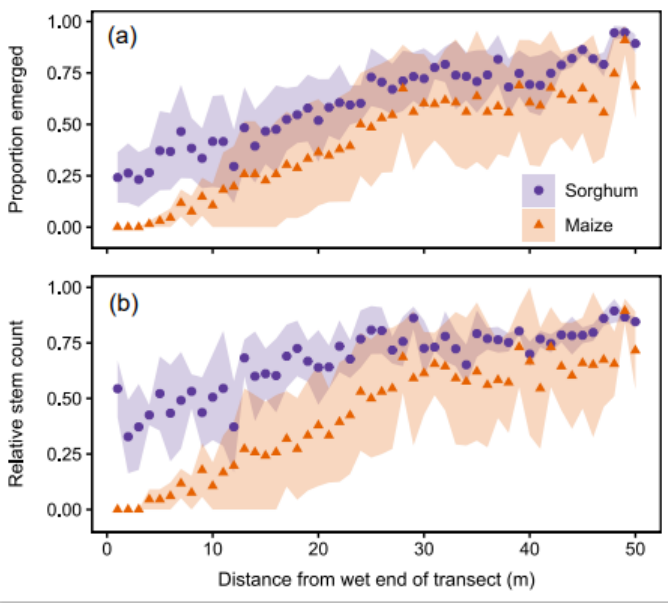Maize and Sorghum Establishment and Yield following Pre-Emergence Waterlogging
Themes: Sustainability
Keywords: Biomass Analytics, Field Data
Citation
Von Haden, A.C., , Burnham, M., Yang, W.H., DeLucia, E.H. Aug. 20, 2021. “Maize and Sorghum Establishment and Yield following Pre-Emergence Waterlogging.” University of Illinois at Urbana-Champaign. DOI: 10.13012/ B2IDB-8293871_V1.
Overview

In 2020, early-season extreme precipitation events occurred after the planting of Sorghum bicolor (L.) Moench and Zea mays L. in central Illinois that caused ponding. Following the first rainfall event, 50m transects were established to assess the waterlogging effects on seedling emergence and crop yields. Soil moisture, emergence, stem and tiller count, LAI, and yield were measured at various points in the season along these transects.
Data
Data Download (57.3 KB) includes:
- Soil moisture
- Leaf area index
- Emergence counts
- Biomass yield
- Stem counts
- Tiller counts